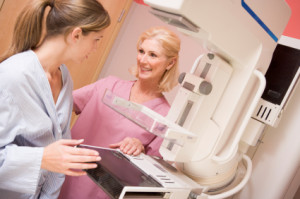 Well, we are approaching the end of National Cancer Prevention Month. So, let’s close with a few more words about prevention and the BRCA gene mutation in women.
Well, we are approaching the end of National Cancer Prevention Month. So, let’s close with a few more words about prevention and the BRCA gene mutation in women.
As many of you know, this is a topic we have discussed several times over the last few years. We know that when a woman inherits an anomaly of the BRCA1 and 2 genes, the woman’s risk for developing breast cancer and ovarian cancer rises significantly. And, we have heard several personal stories from BRCA-positive women who have gone to extreme measures to reduce their risk for developing these cancers.
With breast cancer, many of these women choose to undergo a prophylactic mastectomy. By removing the breast tissue before cancer develops, these courageous women remove their increased risk for the disease. Similarly, many BRCA-positive women choose to undergo a prophylactic oophorectomy, which is the removal of the ovaries before ovarian cancer develops. Until now, guidelines have suggested that women undergo this particular surgery by the age of forty.
A new study from Canada, however, now states that BRCA-positive women should make the decision to have their ovaries removed by the age of thirty-five. Published in the Journal of Clinical Oncology, the study of approximately 5,700 women found that those who wait until after the age of thirty-five to undergo a prophylactic oophorectomy face a likelihood of developing ovarian cancer that is five times greater than women who undergo the procedure before the age of thirty-five.
These are, indeed, extremely tough choices for anyone to make. But, it is vital for all women – especially BRCA-positive women – to remain informed and to know what the options are when it comes to protecting our health – and our lives. So, please read more at http://articles.chicagotribune.com/2014-02-24/news/sns-rt-heath-ovarian-20140224.
And remember, National Cancer Prevention Month may be nearly over, but cancer prevention must remain a constant priority throughout the year – and throughout our lives!



Leave a Comment